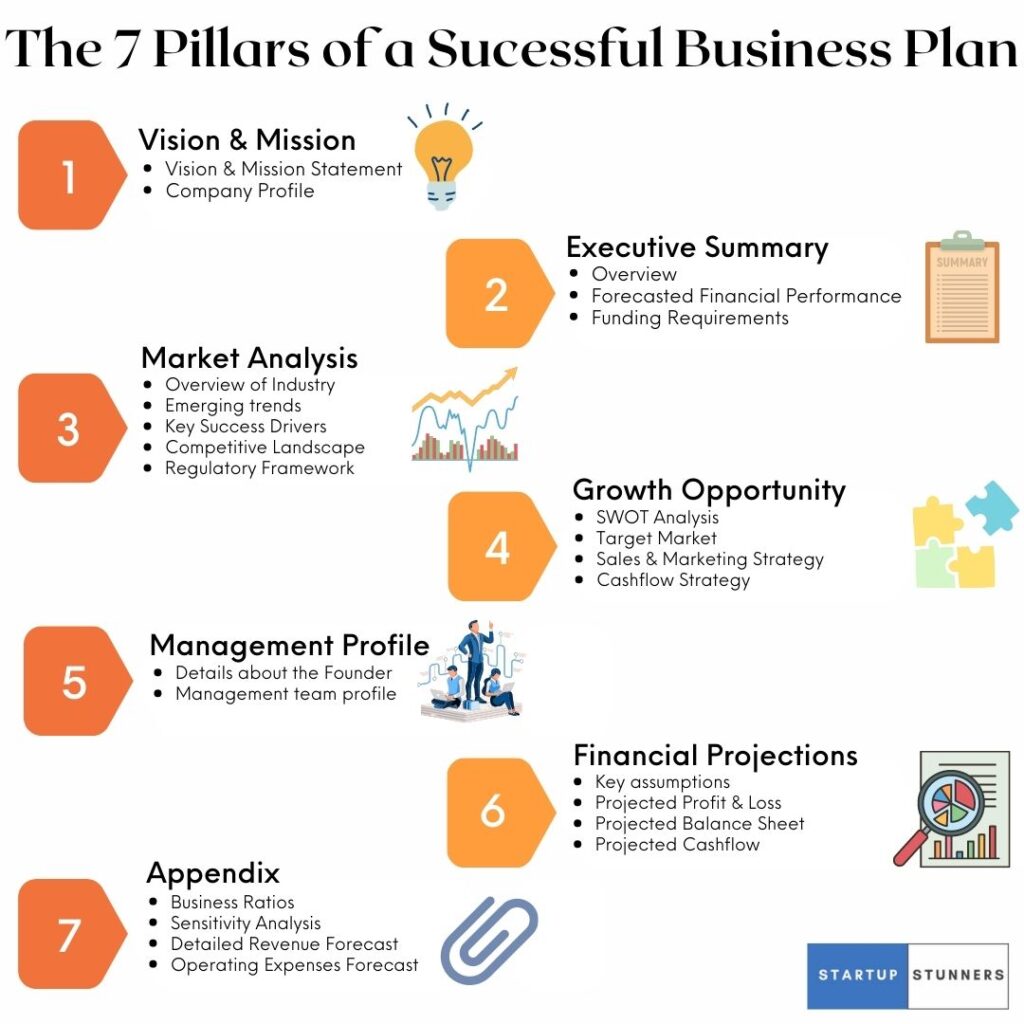Clinical research organizations (CROs) play an important role in the design and execution of clinical studies, which are required to bring innovative medications and medical devices to market. A contract research organization (CRO) is a corporation that provides assistance and services to pharmaceutical, biotechnology, and medical device companies during the clinical trial process. The growing complexity of clinical trials has increased demand for CRO services in the US market, as corporations seek to outsource portions of the trial process to experienced specialists.
The purpose of this blog post is to provide a thorough guide on how to start a Clinical Research Organization, including step-by-step instructions and success suggestions in the clinical research sector. At the end of this essay, readers should have a firm grasp on the procedures required to launch their own CRO and position themselves for success in this expanding market.
How to Start a Clinical Research Organization – Step by Step Guide
Step 1: Overview of the Market
To establish a successful clinical research organization (CRO), it is necessary to first learn about the clinical research sector in the United States. The clinical research sector in the United States is a highly regulated and complicated market, with clinical research undertaken across a wide range of therapeutic fields. Clinical research of various forms is undertaken in the United States, including Phase I-IV clinical trials, observational studies, and registries. Clinical trials are the most common sort of clinical research, in which a novel medicine or medical technology is tested on human participants to establish its safety and efficacy.
Clinical research in the United States has a lengthy history, reaching back to the early twentieth century. With the establishment of the Food and Drug Administration (FDA) in 1938 and the implementation of the Clinical Laboratory Improvement Amendments (CLIA) in 1988, the business has become increasingly complicated and heavily regulated throughout time.
CROs have played a significant role in the clinical research business, supporting and assisting pharmaceutical, biotechnology, and medical device companies during the clinical trial process. Services such as study design, patient recruiting, data collecting and management, and regulatory support are included. Entrepreneurs wishing to create their own CRO can position themselves for success by studying the clinical research business in the United States and the function of CROs within it.
Step 2: Prepare Business Plan
A robust business plan is essential for launching a successful clinical research enterprise (CRO). A business plan serves as a road map for the company, ensuring that all parts of the firm are examined and planned for. An overview of the sector, target market analysis, marketing and sales strategies, financial projections, finance requirements, and operational details are all included in a well-written business plan. It also describes the company’s vision, mission, and values, as well as its unique selling proposition (USP), which differentiates it from other CROs in the market.

Startup Stunners has been providing high-quality business plan writing services for years, and we’re ready to assist you in developing a complete, effective strategy that will move your company ahead. Our team of professionals is committed to assisting you in achieving your company objectives and obtaining finance from banks, grants, or other sources. We’re here to help you succeed whether you’re a newbie, entrepreneur, or small company owner. Don’t put it off any longer; visit startupstunners.com/contact-us/ today and let us lead you to success!
Step 3: Establishing Clinical Trial Services
After you’ve gained a thorough understanding of the clinical research industry and the value of a business strategy, the next stage in launching a successful CRO is to establish clinical trial services. Clinical trial services are the foundation of a CRO because they are the core offering to pharmaceutical, biotechnology, and medical device businesses.
A CRO’s clinical trial services can vary depending on the company’s size and specialism. CROs commonly provide services such as study design, site selection, patient recruitment, data collection and management, and regulatory support. It is critical to have a skilled and experienced team on hand to provide these services, as they necessitate expertise and attention to detail to ensure that the clinical trial runs smoothly and produces accurate and reliable results.
A CRO must have a reputation for providing high-quality clinical trial services in order to form partnerships with pharmaceutical companies. Building a strong network of contacts within the industry, attending conferences and networking events, and showcasing previous successes to potential clients are all essential. A CRO can also distinguish itself by providing unique or specialized services that set it apart from competitors. A CRO, for example, may be an expert in a specific therapeutic area or provide cutting-edge technology solutions for data management and analysis.
Step 4: Develop Standard Operating Procedures (SOPs)
Developing Standard Operating Procedures (SOPs) is an essential step in launching a successful CRO. SOPs are written instructions that explain how to complete a task or activity in a consistent and uniform manner. They are significant because they ensure that all parts of the company are carried out in a methodical and structured manner, which is critical for ensuring the quality of clinical trial services supplied by the CRO.
A title page, purpose, scope, definitions, duties, procedures, and reference papers are all common components of SOPs. These parts contribute to the SOP being thorough and covering all aspects of the task or activity described. It is critical to include individuals who are skilled and knowledgeable in the area being documented while writing SOPs. This ensures that the SOP is correct and reflects the best practices and procedures for that particular task or activity.
Employee training on SOPs is critical to ensuring that they are followed consistently and accurately. Employees that have received SOP training understand the value of adhering to defined protocols and are better suited to do their duties. This training can take a variety of forms, including classroom instruction, hands-on instruction, and refresher courses. Furthermore, SOPs must be updated on a regular basis to reflect changes in rules, industry standards, or best practices.
SOPs ensure that all elements of the business are carried out in an uniform and organized manner, which is essential for ensuring the quality of clinical trial services supplied. A CRO can establish a strong basis for its operations and position itself for success in the clinical research sector by including experienced personnel in the formulation of SOPs, offering extensive training to staff, and constantly updating SOPs.
Step 5: Securing Funds
Obtaining money is a critical step in launching a CRO. CROs can obtain financing from a variety of sources, including:
- Equity financing: In exchange for finance, equity financing entails selling ownership shares in the Company to investors. This can be accomplished with the help of private equity firms, venture capitalists, or angel investors. Equity finance can provide large capital, but it also dilutes the company’s control.
- Debt financing: Debt financing is borrowing money from lenders such as banks or financial institutions and repaying it over time with interest. This can take the shape of a loan, credit line, or credit card. Debt financing can provide instant cash flow, but it also involves interest repayment, which can be a substantial burden for a fledgling business.
- Government funding: CROs can obtain government support in the form of grants, loans, or tax credits. These funding are often allocated to certain research fields or sectors and may impose stringent documentation and reporting requirements.
- Crowdfunding: Crowdfunding is the practice of soliciting small sums of money from a large number of individuals, generally through internet platforms. This can be an excellent alternative for CROs wishing to generate small sums of money or establish a network of supporters.
- Strategic alliances: Strategic alliances involve collaborating with other businesses or organizations to exchange resources, knowledge, and finance. This can be an excellent alternative for CROs wanting to secure finance by leveraging current ties and networks.
Step 6: Tips for Success in the clinical research industry
To compete in the clinical research sector, CROs must have a solid foundation, cultivate strong client relationships, and stay current on industry rules and best practices. Here are some pointers for achieving success in the clinical research industry:
- Concentrate on quality: CROs must build a reputation for offering top-notch services because quality is crucial in the clinical research sector. This includes making certain that all areas of the firm are standardized and organized, and that workers are well-trained and experienced.
- Establish good client relationships: Establishing strong client relationships is crucial for success in the clinical research sector. Listening to clients’ wants and concerns, being responsive and open, and following through on promises are all part of this. CROs may establish a solid reputation and position themselves for long-term success by fostering customer trust and loyalty.
- Maintain compliance with legislation: Because the clinical research sector is extensively regulated, CROs must maintain compliance with all relevant regulations and guidelines. This includes investing in regular personnel training and education as well as being up to date on changes in rules and best practices.
- Use technology to increase efficiency and quality: Technology is becoming increasingly crucial in the clinical research sector, and CROs that can use it to improve efficiency and quality will have a competitive advantage. Investing in technology solutions such as electronic data capture systems and clinical trial administration software is part of this.
- Concentrate on innovation: The clinical research market is continuously changing, and CROs who can innovate and adapt to changes will be well-positioned for success. This entails investing in R&D, being current on emerging trends and technology, and being ready to take prudent risks.
Step 7: Networking and partnership formation
Networking and forming alliances are critical for success in the clinical research sector. Here are some pointers for good networking and partnership formation:
- Attend industry conferences and events: Attending industry conferences and events is a terrific method to meet possible partners and collaborators. These gatherings allow attendees to network with industry experts, learn about new trends and technology, and form new business partnerships.
- Join industry groups and organizations: Another excellent strategy to network and form partnerships is to join industry associations and organizations. These associations and organizations give members access to industry experts and leaders, as well as educational and networking opportunities.
- Use social media: Social media sites such as LinkedIn and Twitter allow you to interact with industry people and develop new connections. CROs can establish new alliances and expand their brand by distributing thought leadership content and communicating with other industry professionals.
- Be aggressive in your approach: Creating alliances necessitates proactive outreach. CROs should identify suitable partners and approach them with a clear value proposition and a plan for how the collaboration may benefit both parties.
- Emphasize collaboration: Relationships thrive when they are collaborative and mutually beneficial. CROs should focus on developing partnerships based on shared values and goals that exploit both parties’ strengths.
- Follow up and keep in touch: Successful collaborations include continual contact and follow-up. CROs should make an attempt to maintain contact with partners and collaborators, as well as to cultivate these connections over time.
Step 8: Staying up-to-date with industry trends
Keeping current with industry developments is critical for clinical research success. Here are some of the reasons:
- Competitiveness: The clinical research sector is extremely competitive, and staying current on industry developments can provide CROs with a competitive advantage. CROs may provide better services and solutions to their clients by understanding the latest technology, methodologies, and approaches.
- Compliance: Because the clinical research sector is highly regulated, maintaining current on industry trends is crucial for assuring compliance. CROs may ensure that they are functioning in a compliant and ethical manner by remaining up to date on the current legislation and guidelines.
- Innovation: Because the clinical research market is always changing, being current on industry trends is critical for innovation. CROs can produce new services and solutions that match the changing needs of their clients by understanding the newest research and development trends.
- Reputation: Keeping up with market changes can help CROs establish themselves as industry leaders. CROs may demonstrate their expertise and establish themselves as trusted partners for their clients by releasing thought leadership content and engaging in industry events and forums.
- Efficiency: Keeping current on industry developments can also help CROs run more efficiently. CROs can enhance their bottom line and become more competitive by implementing new technology and practices that streamline their processes and cut costs.
Step 9: Technology
There are various technologies that can be used in clinical research, each with its own set of advantages. Here are a couple such examples:
- EDC Systems: EDC systems are software applications designed to gather, handle, and store clinical trial data. EDC systems can increase data quality and accuracy by streamlining data gathering and management procedures, reducing mistakes and inconsistencies, and streamlining data collection and management processes.
- Clinical Trial Management Systems (CTMS): CTMS are software tools developed to manage clinical trial operational features such as patient enrollment, study progress, and trial finances. CTMS can increase research efficiency, save expenses, and improve trial management overall.
- Electronic Patient-Reported Outcomes (ePRO) Systems: ePRO systems are software applications that enable patients to electronically complete study-related questionnaires and assessments, typically using a mobile device or PC. ePRO systems can increase patient compliance and engagement while decreasing data entry errors and improving data accuracy.
- Wearable Devices: Smartwatches and fitness trackers, for example, can be used to collect patient health data such as heart rate and activity levels. This information can be utilized to track patient health and the efficacy of treatments. Wearable technology can help boost patient involvement and compliance.
- Artificial Intelligence (AI): Artificial intelligence (AI) technologies such as machine learning and natural language processing can be used to examine enormous datasets and detect patterns and trends. AI can assist researchers in discovering new treatments and therapies, increasing patient recruitment and retention, and improving overall trial design and management.
Conclusion
To summarize, establishing a clinical research organization can be a difficult yet rewarding endeavor. It is critical to have a good business plan in place, to form relationships with pharmaceutical companies, to develop complete SOPs, to acquire funding, and to stay current on industry developments and innovations. CROs may provide high-quality clinical trial services and contribute to the advancement of medical research by following these steps and harnessing the latest technologies. With rising demand for CRO services in the US market, there has never been a better moment to establish a clinical research company.
Frequently Asked Questions
What is the definition of a clinical research organization (CRO)?
A clinical research organization (CRO) is a corporation that provides clinical trial support services to the pharmaceutical, biotechnology, and medical device sectors.
Why are contract research organizations (CROs) significant in clinical research?
Clinical research organizations (CROs) are significant in clinical research because they provide the infrastructure, resources, and knowledge needed to perform clinical trials rapidly and successfully. CROs also help to reduce the risks involved with clinical trials and assure regulatory compliance.
What forms of clinical research are carried out in the United States?
Clinical research in the United States includes drug trials, device trials, observational studies, and epidemiological research.
What exactly are normal operating procedures?
SOPs are written documents that outline the procedures, processes, and rules that a corporation uses to maintain consistency and quality in its operations.
How may CROs obtain funding?
CROs can obtain money in a variety of ways, including venture capital, private equity, grants, loans, and collaborations with pharmaceutical corporations.
How are clinical research technologies used?
Electronic data capture (EDC) systems, clinical trial management systems (CTMS), electronic patient-reported outcomes (ePRO) systems, wearable devices, and artificial intelligence are all extensively utilized in clinical research (AI).
What are some pointers for achieving success in the clinical research industry?
Building a professional and experienced staff, creating good partnerships with pharmaceutical companies, remaining up to speed with industry changes and technologies, and maintaining a focus on quality and compliance are some guidelines for success in the clinical research sector.






